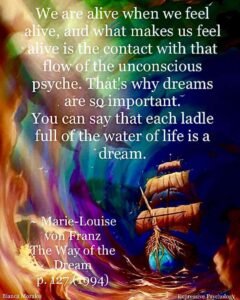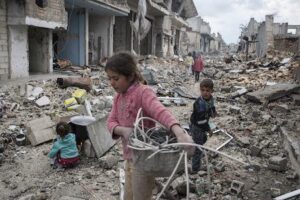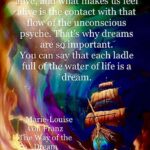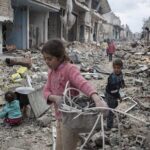 In the 1970’s Westerners experienced a huge surge of awareness about gender stereotypes and we began a concerted effort to free ourselves from them. One issue receiving a lot of attention was how the depictions of female characters in traditional literature unconsciously influenced little girls’ beliefs about themselves and their place in the world. This led many women, myself included, to revisit our personal stories to see how we had limited ourselves.
In the 1970’s Westerners experienced a huge surge of awareness about gender stereotypes and we began a concerted effort to free ourselves from them. One issue receiving a lot of attention was how the depictions of female characters in traditional literature unconsciously influenced little girls’ beliefs about themselves and their place in the world. This led many women, myself included, to revisit our personal stories to see how we had limited ourselves.
Huge changes occurred in our cultural stories too. Television shows like Charlie’s Angels featured women in roles that had been traditionally reserved for men. Scholars like Marija Gimbutas (The Goddesses and Gods of Old Europe) and Merlin Stone (When God Was A Woman) wrote books that examined feminine aspects of spirituality. New volumes of fairy tales were re-written to give the female characters more power and control over their lives. Since then, our growing awareness has fostered greater gender balance in many sectors of society.
How then do we account for the phenomenon of the Disney Princesses? Some see them as positive role models for their daughters, but many see them as stereotypes which are bound to scar our daughters’ minds. Why do they think this? Because the rule for female leads in such tales as Cinderella, Snow White, Sleeping Beauty, The Little Mermaid, and Beauty and the Beast is that they must be young, beautiful, sweetly shy, innocently seductive, charmingly vulnerable, and, for the most part, deferential to males. Moreover, although there are occasional deviations, the plots almost always follow the masculine-hero-rescues-feminine-victim-and-conquers-villain formula for heroic behavior.
If we take these stories as literal models for gender behavior in the outer world they are, indeed, limiting. But what if we see them as symbolic of the inner life of the soul which has a masculine and a feminine drive? What if we realize that each of us contains a sweet and vulnerable Cinderella/Snow White/Aurora/Belle Orphan who needs to be rescued from its child-like dreaminess so we can become conscious, mature, and responsible? What if we recognize the cruel Stepmothers, Stepsisters, and untamed Beasts within us who can influence us adversely if we do not become more aware of them? What if we see that helpful Fairy Godmothers, noble Kings and Queens, and heroic savior Princes are also part of our potential and we can choose to empower them if we wish?
The characters and plots of our cultural stories are projections of our psyches that show us who we are and who we have the potential to become. If we view them as opportunities for self-reflection they can be portals to growth and self-discovery. The Disney Princesses represent a youthful stage of development of our feminine sides. As such, they will appeal to most children for a little while. A few might even stay in that stage throughout their lives — perhaps because the archetype is simply a powerful part of their true personality, or perhaps because they’re afraid to risk changing — but most will grow beyond it. And when they do, there are plenty of other role models out there to pick from.
At 6 and 9 my granddaughters have already outgrown the Disney Princesses. I wonder how long it will be before they discover Barbie and Ken…

A Lesson on Aging
I’m so happy to be back in the mountains. I love the weather, the trees, the birds, the rushing creek, the flowering bushes. The beauty.





0 Responses
Hi Jean,
Growing up steeped in shame, I used to unconsciously compare myself to the men in those movies and walk around feeling inadequate. I also compared the female characters to real-life women and the real-life women could never measure up against such distorted images of beauty. Today I have a whole back log of stored up images from movies I saw as a kid (and teenager and adult) in my head that inject themselves into my everyday life—my prayers and meditations, my conversations with others. Of course I have tools to transform them into gold today, but the journey to get here was wrought with hazards. I recommend going a different way—keep those types of images away from young children—until they are at least old enough to engage in mature discussions about what they are seeing. Fill their minds with images they create themselves by reading them (better yet, telling them) stories of heroes and heroines, saint legends, fables, and biographies. Let them dramatize what they see in their minds with plays and “make believe” games. Let them draw, paint, and sing what they imagine. Let them sculpt their images with clay. Let their minds and souls grow. Disney movies (and I love Disney movies now by the way), like most modern kid’s books riddled with facts, and modern toys riddled with realism, leave no room for the imagination to grow and develop—every detail is already provided. Imaginations need to be fired—not drugged and dulled. But perhaps I am a little extreme… 🙂 Thank you again for your wonderful and beneficial posts.
Hi Joseph,
Thanks, as always, for your honest, thought-provoking comments. I couldn’t agree with you more about the necessity for reading to children and nurturing their creativity. As I see it, the task is threefold: to acknowledge the impact of visual imagery on our attitudes and values; to see the underlying psychological truths to which they refer (as manifestations of realities within the human psyche); and to teach our children to think the same way so they can be visually and psychologically literate. A tall order, I know, but this is what I work for in my own life. Jeanie
Beautifully said: teaching children to be “visually and psychologically literate.” What a gift to the future of our world. I think I’ll borrow that one for my blog. 🙂
The work you’ve done and continue to do is inspiring. Your insights into the stories behind the stories is invaluable to me personally. Thank you for your devotion to the soul–your own, the world’s, and all the children and adults that you touch.
Blessings Dear Jeanie, Blessings,
Joseph
Thank you, Joseph. Back at you, my friend.
Hi Jeanie,
Great post, expressing exactly how I feel about these archetypes. As a mother of two daughters and five granddaughters, I am sensitive to the Disney version of the lovely and helpless princess that is always rescued by the handsome and capable prince. Luckily, my three-year old granddaughter, Serene, has an aware mom…OK, and an aware grandmother…that talks about these inner forces with her and how both boys and girls have within them many forces…loving natures, anger, fear, heroism, compassion. Although Serene is right at the height of her love of playing the Princess, she also plays at being a Pirate (she just requested a Pirate costume for her birthday), the Beast, Spiderman, and Wonder Woman, Diego (the animal rescuer), etc. She is a trip and so imaginative!
Our talks about having all these characters within must have stuck…the other day, she was playing a “beautiful princess” and said, “I am a very strong Princess and can defend my kingdom, but I will not do it unless I have to, because I am a compassionate Princess, too.” Her exact words! And, she know about compassion and what it means – her parents have Buddhist leanings.
There is a great version of Snow White on Clarissa Pinkola Estes’ “The Dangerous Old Woman” CD set. In it, we see that in the original version – the one handed down verbally before Disney came along – that it is initially Snow White’s peace and serenity, as well as beauty, that transforms the Warrior Princes’ hardened heart (the inner Feminine) and teaches him to love again…so there is a co-rescuing going on.
Love your posts,
Jenna
It’s good to hear from you, Jenna! Thank you for adding so much to this discussion. I’m amazed and thrilled at your granddaughter’s words: “I am a very strong Princess and can defend my kingdom, but I will not do it unless I have to, because I am a compassionate Princess, too.” How fortunate she is to have such a wise mother and grandmother!
Yes, unfortunately many of the oldest tales have been changed over the centuries to reflect the biases of the times, but I do see a trend back to the co-rescuing theme in some of the most recent Disney stories as well as elsewhere. This cooperation between mutually empowered opposites is, of course, what the authentic hero’s quest is about. Perhaps we’re waking up to the inner realities on a collective level…
Jeanie